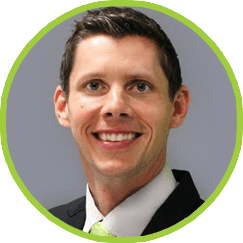Did you know that many people do not seek the care of a chiropractor? There are a variety of reasons, from false stereotypes, a past negative experience with a chiropractor, a misunderstanding of words used in this field, to an over-reliance on the pharmaceutical industry. It’s also due to words like alternative, wellness, non-invasive and holistic that seem to confuse matters even more as they convey a non-medical approach. This couldn’t be further from the truth. The goal of this post is to help provide you with a better understanding of healthy aging with answers questions like: What does holistic really mean?
The basics of human anatomy tell us that each system within our body is connected to the other. Our respiratory system provides the oxygen our body needs to perform each function and remove the carbon dioxide. Our digestive system breaks down the food we eat so each organ and cell has the energy it needs to sustain life. Our nervous system uses the oxygen and food energy to direct the body in every capacity. Each system is connected to the other. Traditional medicine addresses the symptoms. Take, for example, type 2 diabetes or chronic back pain. A common approach is prescribing a pharmaceutical drug to alleviate the symptoms; however, the root cause is still there.
Chiropractic care uses a holistic approach, or, an approach that addresses the whole person versus only the physical symptoms. It focuses on the relationship between the parts of the body and the whole of the person. It is non-invasive care, meaning a chiropractor does not utilize instruments that would disrupt the normal functioning of the body. In other words, the techniques a chiropractor uses helps the body to perform as it was intended to and ultimately heal itself. Chiropractic care is considered to be alternative medicine simply because it isn’t dictated by the pharmaceutical industry and their advertising tactics.
Consider looking at your body from a holistic viewpoint. Consider lifting any restraints that prevent your body from functioning as it should, whether it be extra weight, a sedentary lifestyle, poor eating habits, or lack of sleep. These obstacles force your body to work overtime which diverts energy and resources that should go elsewhere. Be considerate of yourself. Think of your body as the temple that it truly is. The goal, in the end, should be healthy aging.










 3187 Western Row Road Suite 114
3187 Western Row Road Suite 114 Office:
Office:  Email:
Email: